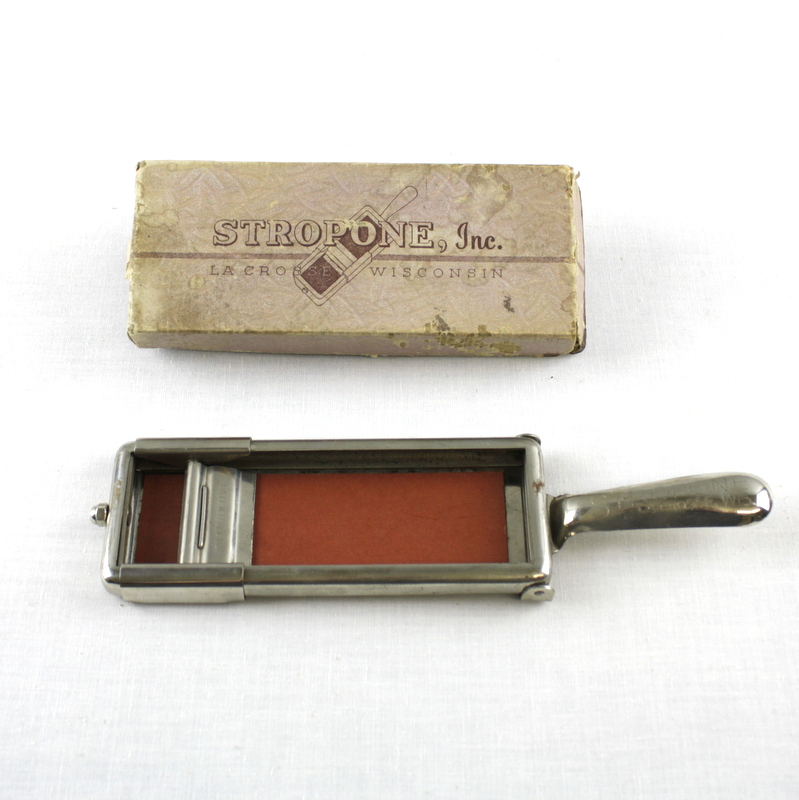Rebekah Schoos
Copyright La Crosse County Historical Society
Catalog Number: 2017.074.01
Pictured here is a circa 1937 Stropone razor sharpener.
The company’s name, Stropone Inc., is a play on the word strop, or stropper, which was a strip of leather used for sharpening straight razors. Strops were extremely popular before the invention of disposable and safety razors, when straight razors were the main shaving tool.
In 1900, King C. Gillette invented the first safety razor. It was very different from the previously popular straight razors, which consisted of one long blade hinged to a handle.
The safety razor was more like the disposable razors of today, the only difference being that only the blades would be replaced, not the entire razor.
Because of this new invention, many believed that sharpening methods were no longer necessary. However, many companies invented hand-held stroppers that could be used to sharpen the safety razor’s blades to make them last longer.
The Stropone Inc. stroppers were occasionally advertised in the La Crosse Tribune. Their rival company, Twinplex, had both mechanical stroppers and safer hand stroppers that were specifically made to be used with the more popular Gillette razor blades.
In a 1920s paper advertisement for Christmas shopping, three different stropper companies advertised because of their uses with different blades: Twinplex strops specifically for Gillette blades, Warner Jones for safety razors’ blades, and Zig Zag for all types of razors, including Gillette and safety blades.
The stroppers from Stropone Inc. were invented by Herbert C. Wilkinson to use with all disposable safety blades, not just Gillette. Wilkinson describes the invention in the patent: “The present invention relates to blade-sharpening devices and the primary object of the invention is to provide an improved honer and stropper for use in sharpening safety razor blades of various types.”
Instructions for use of the Stropone Inc. stropper are located on the back of the box.
Some of the instructions are unreadable because of the condition of the box, but the main idea of the Stropone stropper was to place the blade inside the holder and use the side handles to move the blade up and down the stropper to sharpen the blade.
This stropper was about $2 when bought in 1937 and therefore a more accessible and affordable stropping device compared to others.
One of the most intriguing things about this sharpener is that the engraving on the tool’s handle says STROPONE, La Crosse, Wis., and the front of the box also identifies this as having come from La Crosse, making it yet another example of the myriad items once manufactured here.
This article was originally published in the La Crosse Tribune on May 11, 2019.
This object can be viewed in our online collections database by clicking here.





